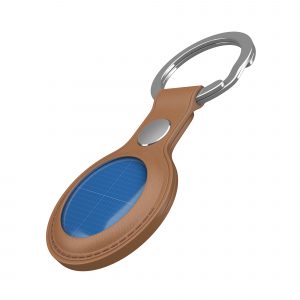Having insufficient insight into the inventory is a nightmare for most managers and business owners. So, it’s no secret that companies should set assumptions and estimations aside and implement precise inventory management systems that will allow them to track all inventory items throughout the supply chain in real-time.

If you’re looking for a great solution to improve your inventory tracking, you’ll find it in this blog post. Below, we discuss RFID inventory management, a revolutionizing system working on radio waves.
Interested? We know you are!
Let’s take a deep dive into RFID stock management and the benefits it can bring to your business.
What is RFID inventory management?
RFID or Radio Frequency Identification inventory management uses radio waves to communicate information about product flows within the inventory. Once the product goes out from the warehouse, RFID tags fix it. Therefore, every change in the stock reflects in real-time updates.
The system provides managers with instant tracking thanks to radio wave technology. It uses RFID tags, which are tiny microchips with small aerials. Those aerials are contain digital information about a specific item. RFID tags are wrapped in plastic, paper, or similar protective material and affixed to product surfaces.

Further, the tags are interrogated by an RFID reader, which is used to transmit and receive RFID tag’s radio signals. This means, once the product with the attached tag moves, the reader collects that information and processes it with computer software.
Thanks to RFID inventory management, company managers have real-time information on all products or product components from production to the point of sale.
Usually, RFID readers are in special places in factories or warehouses to track the signals accurately.
Active and Passive RFID tags
Passive RFID tags are more popular. They are a relatively more straightforward form of tags, which work without charging and get powered by the waves of readers.
Active tags, on the contrary, are regularly powered and are usually used for long-range tracking of products like cars, machinery, etc. As you might guess, active RFID tags are more expensive than passive ones.
How does RFID inventory management work?
If you wonder how all this radio technology converted to data usable for inventory managers, here is how.
RFID inventory management is a part of Automatic Identification and Data Capture technology. This means the system enables automatic data collection about identified objects. The data then directly transferes to the computer system with little or no human intervention. Thanks to the reader’s functionality, this is possible, which allows converting radio waves into usable data.
With the help of a communications interface, this data is transferred to a host computer system․ There, this data is stored in a database and is available to managers for further analysis.
So, once you cooperate with specialized personnel to set up an RFID inventory management system, you will not need to do additional activities to extract usable data from it.
What benefits does RFID inventory management have?
Implementing an RFID system might cost you from $1,000 to $5,000 depending on the choice of cables, tags, power over Ethernet (POE), and other required system components. So, you might wonder whether RFID inventory management is worth the money.
Here are the key business benefits companies experience with an integrated RFID system in place to save your guesswork.
Advanced inventory tracking
RFID inventory management revolutionizes inventory management by significantly increasing the accuracy of inventory tracking. One of the key RFID benefits is that it possibly minimizes human error, as employees do not manually participate in tracking processes.
Being always up-to-date on the stock levels helps company managers successfully plan future orders. There are low chances of “losing” products somewhere in the warehouse and ordering unnecessary extra quantities with RFID inventory management.
Improved working conditions for warehouse employees
The data converted by RFID readers and transferred to the database includes information about the locations of each product. Therefore, warehouse employees spend their time more effectively finding something in the stock.
Easier scanning
Unlike other scanning systems like barcodes, the RFID system reads data at a distance and in any orientation. It does not require a “line-of-sight” scanning as barcodes do. So, it’s generally easier to set up an RFID inventory management system in the inventory and get updates.
Increased customer satisfaction
All customers want to have instant information and check out the products they wish to order. The RFID system allows you to update the stock information in a few clicks and provide accurate information to clients, ensuring you have no missing data.
Which inventory management software should you integrate into your RFID inventory management system?
If you’re serious about positive changes in your inventory management processes, investing in RFID is not the only change you should implement.
There is also a need for quality inventory management software to help you accurately receive and analyze the information. The mentioned is especially important for multi-store companies, where the risk of confusing data and product loss is higher.
To secure yourself from every aspect, we recommend using multichannel inventory management software eSwap. It doesn’t matter how many online channels you sell your products through, eSwap will cover all your stock management.
You can easily integrate all your eCommerce channels to software and manage your inventory, orders, warehouse, and other processes in a few taps.
You can have a free 14-day trial of the tool by following this link.







